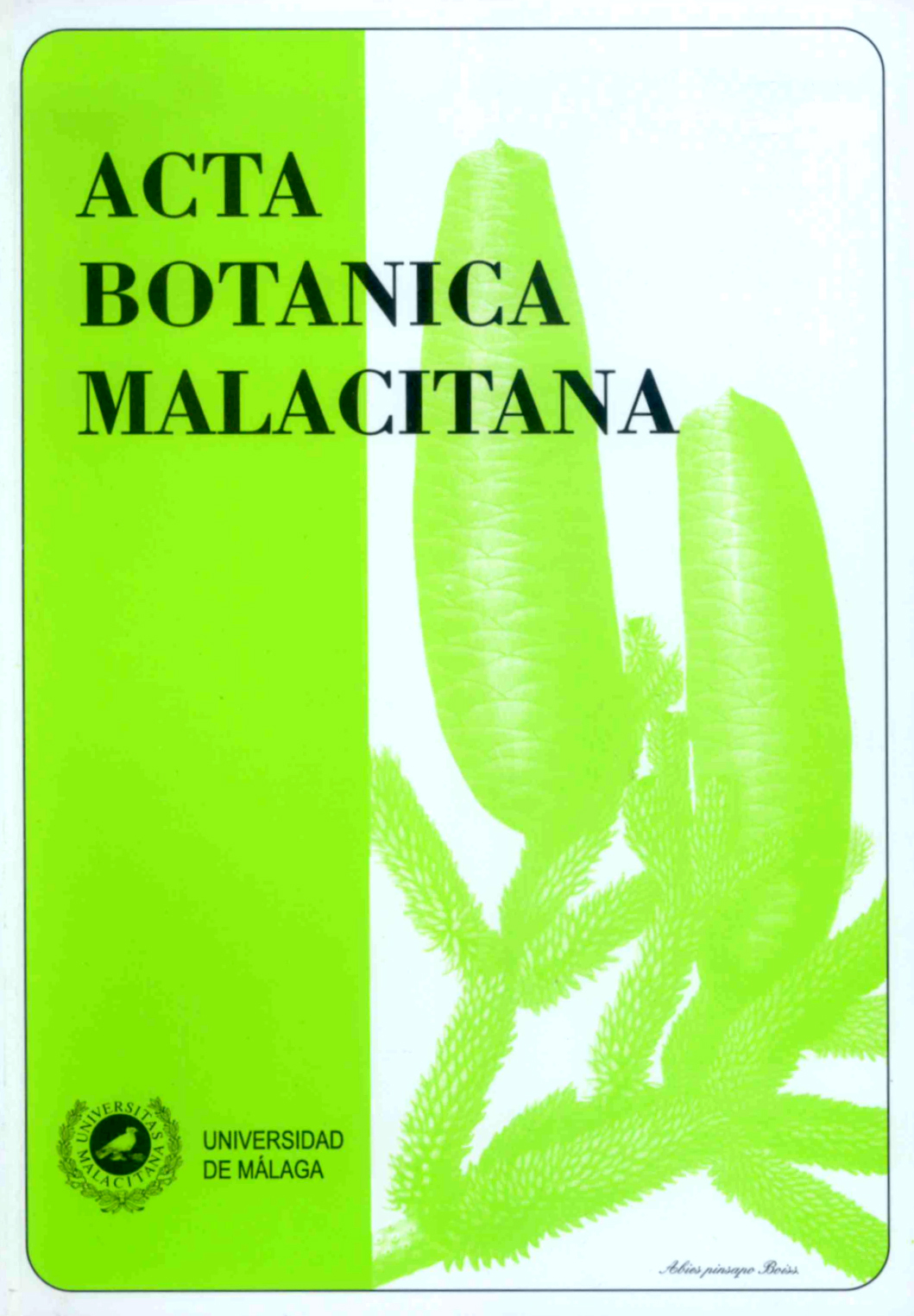Diversidad y características ecológicas de la flora vascular en el Mediterráneo Occidental (Andalucía Oriental, España)
DOI:
https://doi.org/10.24310/abm.v39i1.2574Abstract
Se resalta la importancia de la Flora vascular de Andalucía Oriental en el hotspot Cuenca Mediterránea; para ello se analizan los 3.726 táxones (especies y subespecies) detectados en dicha flora, que suponen más del 42 % de la flora de la Península Ibérica y el 29,9 % de la flora europea. Un 10,3 % de la flora es endémica (350 táxones), que representan el 34,3 % de los endemismos peninsulares y baleares y el 2,6 % de los de la Cuenca Mediterránea, entre los que se incluyen 6 de los 17 géneros endémicos de la Península Ibérica e Islas Baleares, 3 de ellos exclusivos del territorio analizado. Caméfitos y hemicriptófitos suponen el 45 % de la flora, con valores decrecientes para los terófitos al ascender en altitud (del 41,1 al 8,1 %) y creciente para los hemicriptófitos (del 22,4 al 63,2 %). Un 39,2 % de los táxones son mediterráneos, seguidos por los iberonorteafricanos (15,3 %), los ibéricos (13,9 %) y en quinto lugar los endemismos locales (9,4 %). El 12,5 % de los táxones están amenazados según los criterios de la UICN y de un 5,1 no se tienen datos suficientes. Tanacetum funkii, exclusivo de este área, se considera extinto. Solo 6 familias concentran el 43,5 % de los táxones amenazados. En el termotipo mesomediterráneo (600-1.400 m) se desarrollan el 82,8 % de las especies presentes, con un máximo entre los 700-800 m, y mínimos en el ámbito marino (-100-0 m) y, por el contrario, en las cotas más elevadas (3.300-3.400 m).
Downloads
Metrics
Downloads
Published
How to Cite
Issue
Section
License
Those authors who publish in this journal accept the following terms:
a. The authors will retain their copyrights and guarantee the journal the right of first publication of their work, which will be simultaneously subject to the Creative Commons Attribution-Non-commercial 4.0 license whose full text can be found at <http: // creative commons .org / licenses / by-nc / 4.0> that allows third parties to share the work as long as its author and its first publication are indicated, and as long as it is not for commercial purposes.
b. Authors may adopt other non-exclusive licensing agreements for the distribution of the version of the published paper (e.g., deposit it in an institutional telematic file or publish it in a monographic volume) provided that the initial publication in this journal be indicated.
c. Authors are allowed and recommended to disseminate their work through the Internet (e.g., in institutional telematic archives or on their websites) before and during the submission process, which can produce interesting exchanges and increase citations of the published work. (See The effect of open access)







1.png)
